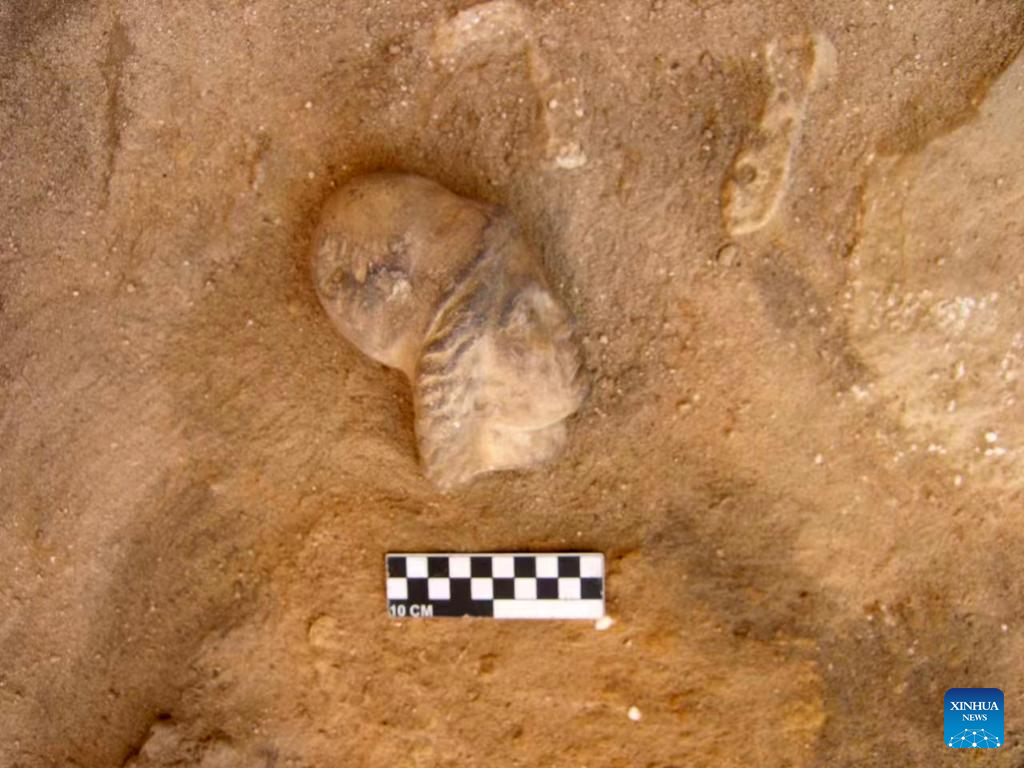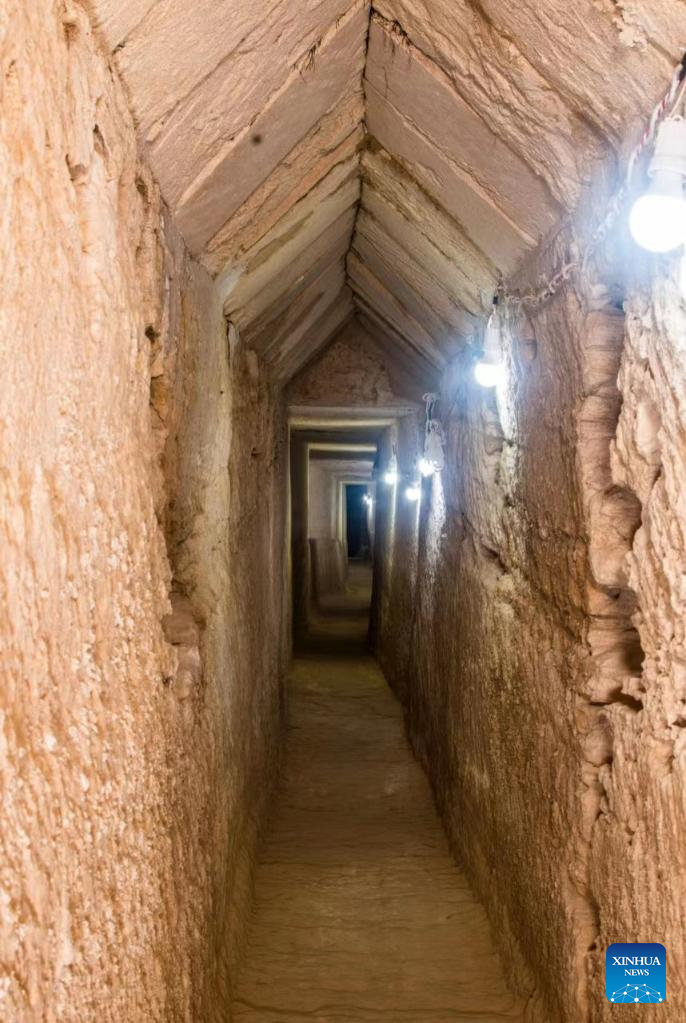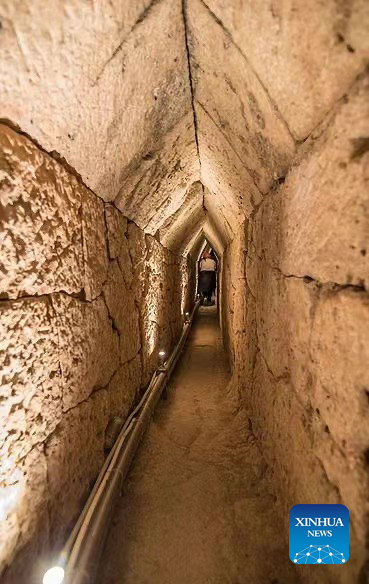
The undated photo shows an alabaster head discovered during archaeological excavations in Alexandria, Egypt. The Egyptian Ministry of Tourism and Antiquities announced on Nov. 3, 2022, the discovery of a stone tunnel, 13 meters beneath the land surface, two alabaster heads, and several potteries in Alexandria. (Egyptian Ministry of Tourism and Antiquities/Handout via Xinhua)
CAIRO, Nov. 3 (Xinhua) -- The Egyptian Ministry of Tourism and Antiquities announced on Thursday the discovery of a stone tunnel, 13 meters beneath the land surface, two alabaster heads, and several potteries in the coastal city of Alexandria, northern Egypt.
An Egyptian-Dominican archaeological mission found the tunnel in the temple of Taposiris Magna, which was a city established by Pharaoh Ptolemy II Philadelphus between 280 and 270 BC, the ministry said in a statement, adding that the tunnel is 1,305 m in length and 2 m in height.
"Near the temple, archaeologists found two heads of alabaster, one is for a person from the Ptolemaic era, from 305 to 30 BC, while the other is for a sphinx," the statement said.
During the excavations and the archaeological survey of the tunnel, a part of the tunnel was discovered submerged under the water of the Mediterranean Sea, it added.
Muhammad Mustafa, an archaeological expert, told Xinhua that earthquakes and climate change are behind the drowning of antiquities in Alexandria. ■

The undated photo shows a view of a stone tunnel discovered during archaeological excavations in Alexandria, Egypt. The Egyptian Ministry of Tourism and Antiquities announced on Nov. 3, 2022, the discovery of a stone tunnel, 13 meters beneath the land surface, two alabaster heads, and several potteries in Alexandria. (Egyptian Ministry of Tourism and Antiquities/Handout via Xinhua)

The undated photo shows a view of a stone tunnel discovered during archaeological excavations in Alexandria, Egypt. The Egyptian Ministry of Tourism and Antiquities announced on Nov. 3, 2022, the discovery of a stone tunnel, 13 meters beneath the land surface, two alabaster heads, and several potteries in Alexandria. (Egyptian Ministry of Tourism and Antiquities/Handout via Xinhua)
